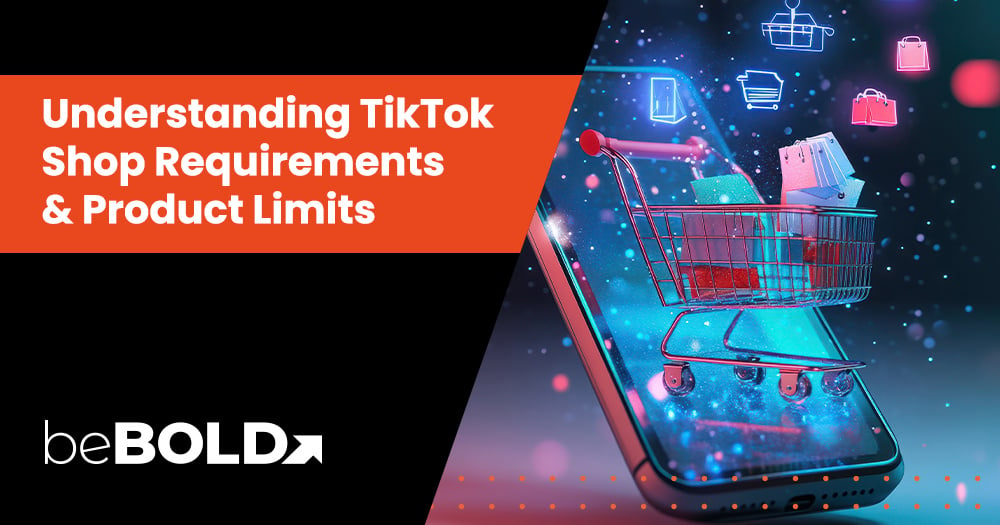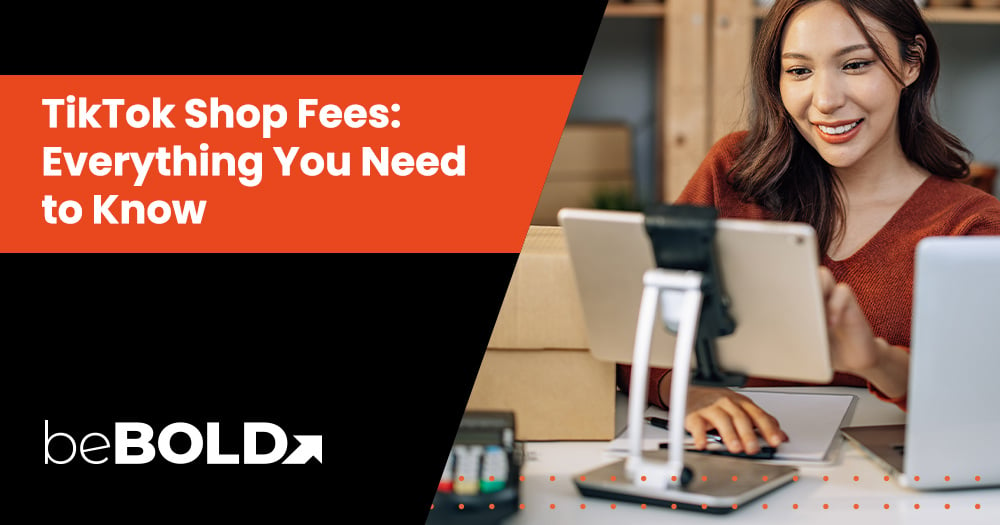Amazon has announced a new Virtual Product Bundles Program that will allow brands and merchants to create bundles of products and sell them as a unit on the Amazon marketplace.
The program is designed to help brands and merchants increase sales and traffic on Amazon and offers several benefits, including exposure to new customers, increased discoverability of products, and simplified order management.
Want to know how brand owners can take advantage of the Virtual Product Bundles Program to boost their sales on Amazon? Read on to learn more!
What are Virtual Bundles on Amazon?
Virtual product bundles for Amazon FBA let brands produce virtual bundles of 2 - 5 ASINs that may have a total purchase price. The details page is 'distance based,' meaning the owner can create packages with little packaging and change inbound stocks at their discretion, making this an excellent way to save money on shipping costs!
Overview of Amazon's Bundle Policy
- A bundle can only have a single category. If the products are from multiple categories, you must list the bundle under the category of the highest-priced (primary) item.
- Each bundled product must be purchasable on its own and should be complementary to the primary product.
- Video, music, books, DVDs, or products from the Video Games category cannot be used as primary items when creating a bundle.
- The referral fee for the bundle will be the same as that of the primary product category.
- Don’t use generic items for bundling
What are the Different Types of Amazon Virtual Product Bundles?

Amazon virtual product bundles can be categorized based on their purpose and the types of products they combine. Here are the main types:
1. Complementary Bundles

These bundles group products that naturally go together and enhance each other’s use. The goal is to increase the customer’s convenience and perceived value.
Examples:
- A shampoo and conditioner set, where both products are designed to work together for better hair care.
- A laptop and a protective sleeve, ensuring the customer gets both the device and protection in one purchase.
- A gaming console with a controller, making it easier for users to start playing right away.
2. Cross-Sell Bundles

These include items that aren't essential to the main product but improve its overall experience. This strategy encourages customers to buy related accessories or add-ons.
Examples:
- A DSLR camera bundled with an SD card and a tripod, helping a photographer get started immediately.
- A smartphone with a wireless charger and screen protector, enhancing usability and protection.
- A grill with a BBQ toolset and wood chips, making it easier for customers to enjoy grilling right away.
3. Seasonal Bundles

These focus on holidays, events, or specific times of the year when customers are looking for themed products. The goal is to create urgency and capitalize on seasonal demand.
Examples:
- A Christmas decoration bundle with lights, ornaments, and a tree topper.
- A back-to-school bundle with notebooks, pens, and a backpack.
- A summer essentials pack with sunscreen, sunglasses, and a beach towel.
4. Value-Based Bundles

These bundles offer multiple similar items at a discount, making them attractive for customers looking for cost savings. They work well for consumables or frequently replaced products.
Examples:
- A 3-pack of phone cases in different colors, allowing customers to switch styles.
- A bundle of six pairs of socks, saving money compared to buying them individually.
- A bulk pack of protein bars, offering a lower price per unit for fitness-conscious shoppers.
5. Introductory Bundles

These pair a new product with a best-seller to encourage customers to try something unfamiliar. This strategy builds trust and boosts sales for newer items.
Examples:
- A new face serum bundled with a popular moisturizer, helping customers feel confident in trying the new product.
- A new energy drink paired with a top-selling protein shake, encouraging trial without risk.
- A recently launched smartwatch with a best-selling pair of wireless earbuds, making the offer more enticing.
If you need a head start with creating Bundles on Amazon, check out our blog on the beginner’s handbook here!
How Do Amazon Virtual Product Bundles Work?
Amazon Virtual Product Bundles allow sellers to group related products under one listing without physically packaging them together. This feature makes it easy to offer curated product sets while Amazon handles inventory and shipping separately for each item.
1. Creating a Bundle
-
- Sellers select two to five complementary products from their catalog.
- A new listing is generated, complete with a title, description, and images.
- The seller sets a bundle price, which can be lower than buying each item separately.
2. Customer Purchase Experience
-
- The bundle appears as a single product on Amazon, making it easy for customers to find.
- When purchased, Amazon ships each item directly from its respective fulfillment center.
- Unlike traditional pre-packaged bundles, customers may receive multiple deliveries.
3. Inventory & Fulfillment
-
- Since the products are not physically bundled, stock levels are managed separately.
- If one item in the bundle goes out of stock, the bundle listing is temporarily unavailable.
- Returns are processed per item, meaning customers can return part of the bundle rather than the entire set.
4. Marketing Advantages
- Helps increase the average order value by encouraging multi-product purchases.
- Allows sellers to test product pairings without committing to pre-packaged bundles.
- Reduces friction in upselling, as customers can buy everything they need in one click.
Seller Eligibility and Requirements for Amazon Virtual Bundles

To create Amazon Virtual Bundles, sellers must meet specific eligibility criteria. Here’s a breakdown:
1. Fulfillment by Amazon (FBA) Requirement
Amazon Virtual Bundles are only available to sellers who use Fulfillment by Amazon (FBA) for all bundled products. This means every item in the bundle must be stored in Amazon’s fulfillment centers, and Amazon handles the entire shipping process. Unlike traditional product bundles, sellers do not need to pre-package or physically group the items together. Instead, Amazon processes and ships them separately, ensuring efficiency and faster delivery. If any product in the bundle is not fulfilled by Amazon, the bundle listing will not be eligible.
2. Amazon Brand Registry Enrollment
Sellers must be enrolled in Amazon Brand Registry to access the Virtual Bundles feature. This program ensures that only verified brand owners can create and list bundles, preventing unauthorized sellers from using branded products they do not own. Brand Registry also provides additional marketing tools such as A+ Content and Amazon Stores, which can enhance the bundle’s visibility and appeal. Without Brand Registry enrollment, sellers will not have the option to create Virtual Bundles within Seller Central.
3. Active and Buyable Product Listings
All items in the bundle must have active, purchasable listings on Amazon. If a product is out of stock, suppressed, or inactive due to policy violations, the bundle listing will also become unavailable. Since bundles rely on existing inventory, sellers must ensure that all products remain in stock to keep their bundle listings live and accessible to customers.
4. Product Restrictions for Virtual Bundles
Certain product categories are not eligible to be included as primary products in Virtual Bundles. Digital items such as eBooks and software downloads cannot be bundled, as they do not have physical inventory for Amazon to fulfill. Video games and gaming consoles are also restricted due to licensing and distribution policies. Additionally, some items fall under restricted categories, such as hazardous materials or adult products, which require special approvals. While restricted products cannot be the primary product in a bundle, some may still be included as secondary items depending on Amazon’s specific guidelines.
How to Create Virtual Product Bundles?
Creating Amazon Virtual Product Bundles is straightforward but requires a step-by-step approach. Here's how you can do it:
Step 1: Log in to Seller Central

- Navigate to Seller Central and sign in with your credentials.
- Ensure you’re enrolled in the Amazon Brand Registry and have FBA inventory.
Step 2: Access the Virtual Bundles Tool

- Log in to your Amazon Seller Central account.
- Navigate to the Menu on the upper left-hand corner, select Brands, and then choose Virtual Bundles.
- Ensure that your brand is registered with Amazon Brand Registry to access this feature.
Step 3: Select Products for Your Bundle

- Choose 2 to 5 branded ASINs that are eligible for bundling. These products must belong to the same brand under your Amazon Brand Registry.
- Prioritize products that are commonly purchased together to create a cohesive and valuable bundle.
- Decide the main component of the bundle, which will act as the anchor product and determine where the bundle appears on product listings.
Step 4: Set Quantities and Inventory

- Check the inventory levels of each product to ensure you have sufficient stock for the bundle.
- Remember, the total bundle availability will match the lowest inventory level among the included products.
- Specify the quantity of each product in the bundle, if applicable (e.g., 2 units of one product and 1 of another).
Step 5: Add Bundle Images

- Create a primary image that visually represents all items in the bundle, ensuring it has a white background for consistency.
- Include up to eight additional images showcasing the products individually or in use.
- Use high-quality, visually appealing images to boost conversion rates.
Step 6: Write Titles and Descriptions

- Bundle Title: Combine key features of the products and clearly indicate it’s a bundle (e.g., “Golf Mirror and Towel Bundle – Save 10%”).
- Short Title: Ensure it is concise and fits within Amazon’s character limits (e.g., “Mirror & Towel Set”).
- Description: Highlight the benefits of the bundle, such as savings, convenience, and value.
Step 7: Set a Competitive Price

- Combine the prices of the individual products and offer a discount (e.g., 5-10%) to encourage bundle purchases.
- Clearly communicate the savings in the product description or bullet points.
Step 8: Optimize Bullet Points

- Add 3-5 bullet points emphasizing the bundle’s value, features, and benefits.
- Focus on how the bundle enhances the customer experience and provides better value than purchasing products separately.
Step 9: Create and Publish

- Assign a SKU to the bundle for easy identification in your inventory.
- Review all the details and click Save and Publish.
- The bundle will appear in your inventory with a unique ASIN and typically go live within 15-24 hours.
Step 10: Monitor and Edit

- Once live, the bundle will be displayed under the main product listing in the “Make it a Bundle” section.
- You can edit the title, description, price, and images after publishing.
- Note that you cannot change the products or quantities in the bundle once published.
What is your Virtual Bundling Strategy?

Creating an effective virtual bundling strategy is key to maximizing the benefits of Amazon Virtual Bundles. A well-planned approach can attract more customers, boost sales, and improve the overall shopping experience. Here are a few important factors to consider when developing your strategy:
1. Bundle Complementary Products
Choose products that naturally go together or are often purchased as a pair. For example, a camera and a tripod or a skincare set with a cleanser and moisturizer. This ensures the bundle feels practical and valuable to customers.
2. Match Products with a Similar Price Point
Select items that are in a similar price range to create a balanced bundle. This prevents one product from overshadowing the others and helps maintain a fair perception of value.
3. Offer Attractive Discounts
Incentivize customers to buy the bundle by offering a discount compared to purchasing each item separately. Highlight the savings clearly to make the offer even more appealing.
4. Use a Clear and Engaging Title and Description
Craft a bundle title and description that clearly communicate the benefits and contents of the bundle. Include relevant keywords to improve search visibility and make it easy for customers to understand the value they’re getting.
Examples of Amazon Virtual Bundles

Virtual bundles are a great way to increase your average order because they allow you the chance of getting more than one product with different discounts. The beauty category has many opportunities for this type virtual bundle such as shampoo and conditioner which can be purchased at an average price point between $8-12 dollars depending on where it's from but when paired together, customers will purchase both items separately costing around same amount while saving money by purchasing them together in package deals under 20$.
Other examples include household staple foods (like cereal) that offer much lower prices if bought individually; however during sale periods consumers might buy more often resulting in higher order values.
But how can I tell this is a virtual bundle?
You can tell by scrolling down the page a little and you will see "This bundle contains 2 items (may ship separately)". Check out this example here.

Few more examples of Amazon Bundle Products-
- Valentine’s Day Gift Mask Set

- Shampoo & Conditioner Bundle

What are the Benefits of Virtual Product Bundling?
Bundling products is a great way for beauty enthusiasts to get everything they need in one place. Not only does this save time, but it also saves money. Bundling products also allows beauty enthusiasts to try new products without committing fully to them.
For example, a beauty enthusiast might want to try a new eyeshadow palette but wouldn't want to spend the money on a full-sized product. By bundling it with other products, they can try it out without breaking the bank. In addition, beauty enthusiasts can also create their own custom bundles by choosing the products that they want.
This allows them to get exactly what they need and nothing that they don't. Bundling products is a great way for beauty enthusiasts to save time, and money, and get exactly what they need.
1 - Win the Buy Box Battle
The bundle can require longer creation time and therefore less buyers are using it. There's also no competition with the shared buy box. If a shopper shares the box, they must create identical packages for you. Then, you can profit by purchasing the box in your own hands by choosing one popular combo. There are many advantages of selling single product because it takes time before competition grows. If that happened you could enter a price war or share the Buy Boxes with others from Amazon.
2 - Higher Minimum Order Value
Bundles are more expensive and require more order quantities, giving customers more opportunity at lower prices for goods. Amazon's fee structure has traditionally prevented low-value products from being sold, as they have destroyed profits. Because bundles are categorized as the same item and Amazon referred fees are charged for each bundle, it is very easy for sellers to buy low-value items.
3 - Sell less popular products
Maybe the idea of selling less popular products sounds odd to many people, so listen. Maybe you tried the product but the product did NOT stick out. Why not mix them with popular products? Psychologically sales are strange. Some people might choose to purchase the same product over one simply by focusing on getting two instead of one.
4 - Make it easier for your customers
When product bundles are appropriate, it should be convenient. It's important to be satisfied with our service. These comments will encourage conversions, which will boost organic rankings on Amazon.com. This is a way to start a sales flywheel. It's a simple way of driving auto sales.
5. Customization and Personalization
Customization leads to a more satisfying and relevant purchase, ensuring that customers are not paying for items they don’t need. Personalized bundles make the shopping experience feel more exclusive and customer-centric, enhancing satisfaction and fostering brand loyalty.
6. Reducing Decision Fatigue
Bundles reduces the cognitive load of having to compare products or worry about whether items will work together, making the purchasing process simpler and more enjoyable for customers. It helps customers feel confident in their decisions, knowing the products have been thoughtfully grouped together.
7. Easy Gift-Giving Option
Bundling also offers a convenient solution for customers who are looking for gift ideas. Beauty product bundles make it easier for shoppers to pick out thoughtful gifts for loved ones without spending time selecting individual items. The pre-packaged sets cater to various needs and preferences, ensuring that customers can find the perfect gift quickly. This makes bundles an attractive option, especially during holiday seasons or special occasions.
Can you create Virtual Bundles in Amazon Vendor Central?

Absolutely! An Amazon Virtual Bundle is a group of products that are related to each other, but are not physically bundled together. Customers can add all the items in the bundle to their cart with just a few clicks, and you as the seller get to choose which products are included in the bundle. This is a great way to cross-promote complementary products and increase your average order value.
One issue is that you will need to have Amazon Vendor Support set up these virtual bundles in Vendor Central or you can reach out to beBOLD to help you setup these Vendor virtual bundles.
Amazon virtual bundles are a great way to increase your sales and boost your conversion rate. You can create virtual bundles in Seller Central by going to Brands > Virtual Bundles.
When creating the listing, you'll need to specify the products that are included in the bundle, as well as the price of the bundle. Virtual bundles are a great way to offer discounts on multiple products, and they're a great way to increase your sales. Thanks for reading!
Can you advertise virtual bundles?
Advertisement and Enhanced Content Presently Virtual Bundle ads are only able to be displayed on Sponsor branded advertisements and not sponsored product advertisements. Brand owners are allowed to create unique A+ content pages for Virtual Bundles.
How to Track the Performance of Your Virtual Bundle?
Amazon is not recording virtual bundle sales reports in Seller Central at this point of time. Instead, the sales are passed through to each component of the bundle. With this, Amazon makes it easy to manage your inventory without tracking new SKUs. However, you may not be able to track the performance of your bundle.
To keep a record of bundle sales, Amazon sends you an email once a week with a link to download your bundle sales from the past 90 days in CSV format. This report contains:
- Date: Given in the format of Year/Month/Day. If there is no date, the bundle has no sales recorded.
- Bundle ASIN
- The first 100 characters of the bundle title
- Total sales: Sum (bundle price * bundles sold). This column gives ordered product sales for the bundles.
Key Metrics to Watch:
- Conversion Rate: How well your bundle is converting visitors into buyers.
- RoAS (Return on Advertising Spend): Measure the effectiveness of your ad campaigns for bundles.
- AOV (Average Order Value): Track whether your bundles are increasing the average spending per order.
Additionally, leveraging Amazon Brand Analytics can provide deeper insights into your bundles’ performance, customer preferences, and competitive benchmarks.
What Are Some Challenges in Using Amazon Virtual Bundles?

While Amazon Virtual Bundles offer numerous benefits, they come with their own set of challenges that sellers need to navigate carefully. These hurdles can impact the effectiveness of your bundles, requiring thoughtful strategies and adjustments to overcome them. Understanding these challenges will help you create bundles that are not only appealing but also practical and successful.
Here are some of the most common challenges associated with Amazon Virtual Bundles:
1. Pricing Complexity
Setting the right price for Amazon Virtual Bundles can be challenging. Sellers need to ensure that the overall bundle price is competitive while considering the cost of individual products. If the bundle is priced too high, it might discourage customers, but if it’s too low, the seller may not cover their costs. Finding the sweet spot is crucial for maximizing profitability while attracting buyers.
2. Limited Customization Options
One limitation of Amazon Virtual Bundles is the lack of customization options. Sellers cannot fully tailor the bundles to meet specific customer needs beyond the selected products. This restriction can make it difficult to create truly personalized offers that could appeal to a specific audience, potentially limiting the effectiveness of the bundle.
3. Advertising Challenges
Promoting virtual bundles on Amazon can be difficult due to limitations in ad placements and targeting. Sellers may find that their bundles do not have the same advertising reach as individual products, as the platform doesn't always give priority to bundles in search results or ads. This can make it harder to get visibility and drive sales for these bundled offerings.
4. Performance Analytics
Tracking the performance of Amazon Virtual Bundles presents its own set of challenges. The platform doesn’t offer detailed, bundle-specific analytics, making it harder for sellers to monitor sales trends and assess the effectiveness of their bundles. Without this data, it's difficult to optimize bundles or understand which product combinations are performing best.
5. Visual Representation Issues
Bundles may not always appear in listings as intended. Sometimes, the product images or layout might not be as appealing or clear, which could affect how customers perceive the offer. In some cases, items within the bundle might not be clearly visible, leading to confusion or a lack of trust in the product.
6. Customer Returns and Feedback
Handling returns for bundles can be more complicated than for individual products. If a customer returns a bundle, they might only want to return one item, but this creates logistical challenges. Furthermore, a single defective item can lead to negative feedback for the entire bundle, even if the other items are in perfect condition.
7. Ad Restrictions and Promotional Challenges
There are specific rules around advertising and promoting bundles, which can limit the exposure and success of virtual bundles. For example, sellers may face restrictions on where and how their bundles can be promoted, reducing the scope of their promotional efforts. These limitations can make it harder to compete effectively, especially during peak shopping seasons.
Amazon FBA Virtual Bundles Best Practices

Creating virtual product bundles is a powerful way to enhance customer experience, boost sales, and maximize the value of your Amazon store. By combining complementary items into a single listing, you can attract more buyers, simplify purchasing decisions, and increase your average order value.
However, to make the most of this feature, it’s important to follow best practices that ensure your bundles stand out, remain compliant, and deliver meaningful value to your customers.
Here are some key strategies to help you create and manage effective Amazon FBA virtual bundles:
1. Choose Complementary Products
Bundle items that naturally fit together for a seamless customer experience. Consider the purpose of the bundle and how each product enhances the other, ensuring they meet customer needs efficiently. Products that complement each other can drive higher conversions and improve the overall customer experience.
2. Use Eye-Catching Product Images
Visual appeal is crucial to attract attention and increase conversions. Use high-quality images that showcase the bundle clearly, with each individual item visible. Consider using lifestyle images to convey how the products work together, which can boost the bundle’s attractiveness.
3. Optimize Product Listings
Ensure clear, concise, and keyword-rich descriptions to boost visibility. Incorporate relevant keywords that potential buyers may use when searching for products similar to those in your bundles. SEO optimization increases your bundle’s chances of appearing in relevant search results, driving organic traffic to your listings.
4. Price Strategically
Price bundles competitively while maintaining profitability. While bundles should offer a value proposition, it's important not to compromise on profit margins. Use dynamic pricing strategies and consider the overall value you’re providing. Offering attractive pricing can encourage customers to choose your bundle over individual products.
5. Maintain Inventory Levels
Ensure that bundle components are consistently in stock. Running out of stock on even one item in a bundle can lead to missed sales and potential customer frustration. Regular inventory checks and forecasting can help you avoid stockouts and keep your bundles available.
6. Promote Your Virtual Bundles
Utilize targeted advertising and promotions to boost visibility. In addition to using Amazon’s advertising tools, promote your bundles via social media, email marketing, and influencer partnerships. Organic promotional channels can help raise awareness and drive traffic to your listings without additional costs.
7. Focus on Seasonal and Trend-Driven Bundles
Capitalize on demand spikes during holidays or trends. For example, bundling products related to summer skincare or holiday gift sets can tap into seasonal demand, driving increased sales. Keep an eye on market trends and adjust your bundles to align with what’s currently popular or in demand.
8. Offer Value Beyond Savings
Focus on bundle convenience, not just discounts. While price savings are important, emphasize the convenience and time-saving aspects of buying a bundle. If customers can easily find everything they need in one package, it adds value beyond just the price reduction.
9. Create Multiple Bundle Variations
Cater to different customer needs and preferences. Some customers may prefer smaller, trial-size versions of products, while others may want larger quantities. Offering variations of the same bundle allows you to target different segments and maximize potential sales.
10. Stay Compliant with Amazon Policies
Always adhere to Amazon's rules for bundle creation and advertising. Ensuring compliance with Amazon's guidelines helps avoid issues such as listing removals, suspension, or penalties. Familiarize yourself with Amazon’s requirements and keep up to date with any changes.
11. Leverage Enhanced Brand Content (A+ Content)
Use A+ Content to enrich listings and enhance brand visibility. This feature allows you to showcase your products in a more visually appealing and informative manner, with additional images, text, and enhanced formatting. A+ Content can help increase conversion rates and provide a more professional appearance for your bundles.
12. Leverage Trends and Popular Themes
Stay ahead of emerging trends and integrate them into your bundles. Whether it’s a seasonal trend or a growing consumer interest, creating bundles that reflect these trends can help attract customers who are eager to buy products in high demand. Monitoring social media, influencer recommendations, and industry news can keep you informed about trends that could influence your bundle creation.
13. Utilize SEO-Rich Listings
Incorporate high-traffic keywords that not only describe your bundle but also the benefits it provides. SEO-rich titles and bullet points will help your bundles appear in more relevant searches. Prioritize keyword relevance over fluff to keep listings focused and effective for attracting customers.
Boost Your Brand’s Impact in the Digital Space
In today’s competitive digital marketplace, standing out can be a major challenge for brands, especially when your business doesn’t have the visibility it deserves. Traditional marketing methods no longer cut it, and many businesses find it hard to build a strong, recognizable online presence that captures their target audience. Without the right strategies, even the best products can go unnoticed, leaving potential sales on the table.
At beBold Digital, our digital marketing services are designed to enhance your brand’s visibility, drive engagement, and connect with the right audience. From personalized content strategies to SEO optimization and social media campaigns, we offer solutions that make your brand stand out and thrive in the digital world. Partner with us, and let’s bring your brand’s vision to life!
Amazon Virtual Bundles Conclusion
If you're looking for a way to increase sales and traffic on Amazon, the Virtual Product Bundles Program may be just what you need. This program offers several benefits, including exposure to new customers, increased discoverability of products, and simplified order management.
And if you're not sure where to start or need help setting up your virtual bundles, beBOLD Digital can manage your entire Amazon business for you. Contact us today to learn more about how we can help boost your online sales with this powerful program!
Amazon Virtual Bundle - Frequently Asked Questions
Can I advertise my virtual bundle?
Amazon Virtual Bundles are currently only able to be advertised on Sponsor branded advertisements and not sponsored product advertisements. Brand owners are allowed to create unique A+ content pages for Virtual Bundles.
Can virtual bundles be edited?
When a virtual bundle is created, it becomes an independent SKU. You can edit the title, description, bullets, images, and price. However, you cannot change the products offered within the bundle itself.
Can you create virtual bundles in Amazon Vendor Central?
No, virtual bundles can only be created in Amazon Seller Central. Vendor Central users cannot create virtual bundles as this feature is currently exclusive to Seller Central.
Can you create virtual bundles in Amazon Seller Central?
Yes, virtual bundles can be created in Amazon Seller Central. As long as you are registered with Amazon Brand Registry and use FBA, you can bundle products together and offer them to customers as a single, discounted package.
What is the best pricing strategy for virtual bundles?
The best pricing strategy for virtual bundles is to offer a discount on the combined price of individual items, typically 5-10%. This encourages customers to purchase the bundle while maintaining profitability. Make sure the price covers product costs, FBA fees, and still provides value to the customer, creating a perception of a good deal without sacrificing your margins.
Need help setting up virtual bundles? beBOLD Digital can handle your entire Amazon business. Contact us today!







Comments